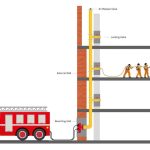Geospatial Information Systems (GIS): what are they?
systems for all forms of data that create, manage, analyze, and map it. GIS connects data to a map and combines several types of descriptive data with location data (where objects are) (what things are there). This serves as a foundation for the mapping and analysis employed in science and virtually every sector of business. GIS aids users in comprehending trends, connections, and geographic context. Together with better management and decision-making, benefits also include enhanced communication and efficiency.
Many thousands of businesses in virtually every industry utilize geographic information systems (GIS) to make maps, share information, do analyses, and solve challenging challenges. This alters how the world functions. GIS can be used to highlight difficulties that are geographically-based. This map of opioid prescription claim locations illustrates the geographic trends that result from accurate data mapping. The spatial sciences are applied via GIS technology through tools that promote comprehension and cooperation. They assist people in achieving a shared objective: to get useful information from all kinds of data.
GIS uses spatial location
to integrate many types of data layers. Geographical information makes up the majority of the data. GIS data consists of base maps, features, and pictures that are connected to spreadsheets and tables
By giving your insights and decision-making new perspectives, spatial analysis enables you to evaluate relevance and capability, estimate and anticipate, interpret and understand, and much more.




